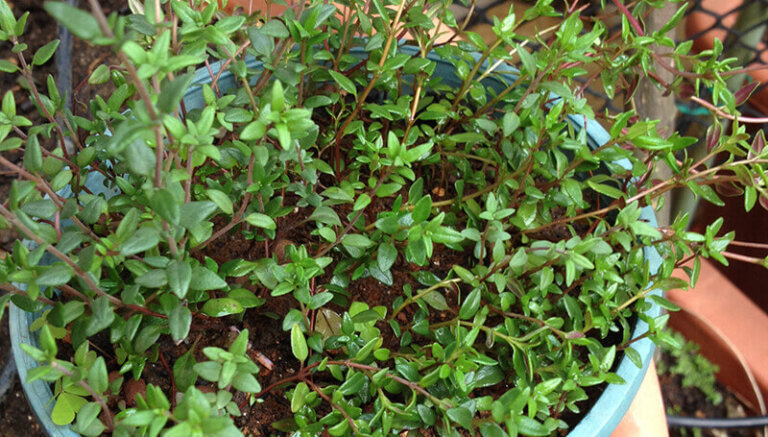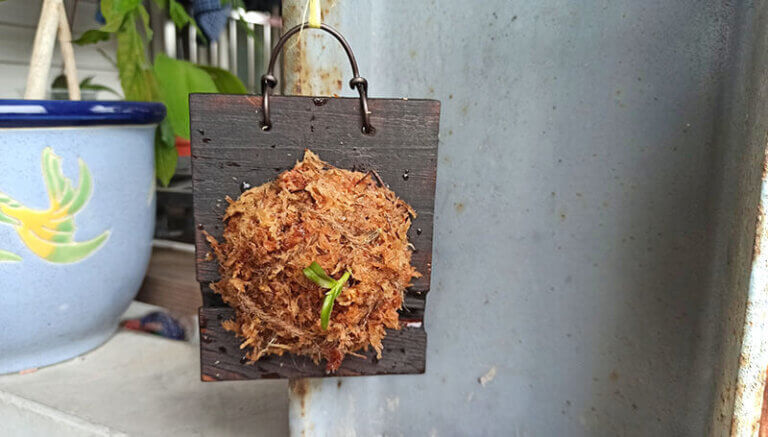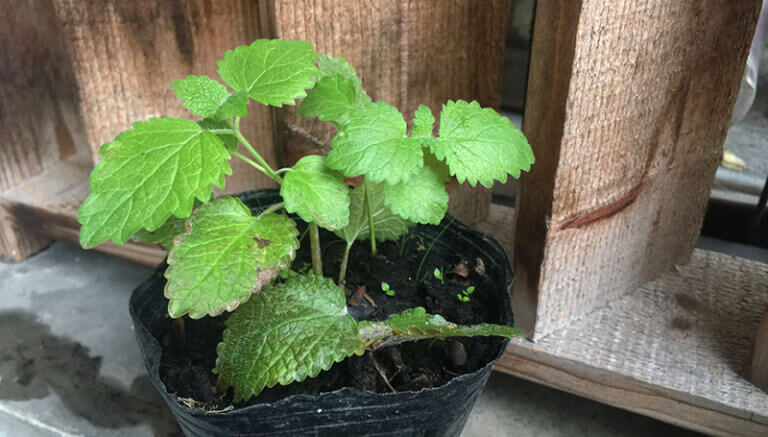內容目錄
Leaf Propagation Succulent – Echeveria cv. Huthspinke
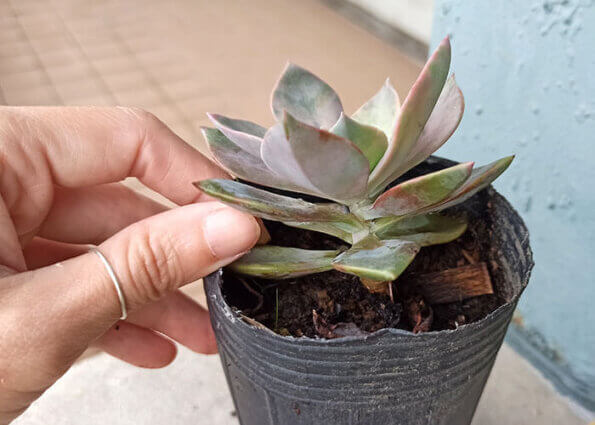
The longest-lasting succulent that Mimi has ever raised is the aloe vera. Originally intended for facial treatments, I later read some articles warning that certain components of aloe vera, if applied directly to the skin, might cause allergies. Consequently, I repurposed it as a decorative plant for my balcony. Due to my frequent forgetfulness in watering, the leaves turned yellow. However, succulents are known for their resilience as desert plants; they can survive for a month without water! At least, Mimi’s aloe vera is still alive—it just looks a bit dry. Giving it a good soak once rejuvenates it for another month!
After moving to Yilan, friends gifted me two varieties of succulents: “Graptopetalum paraguayense” and “Echeveria cv. Huthspinke.” This piece focuses on the latter, which is comparatively more challenging to grow: “Echeveria cv. Huthspinke.”
Succulent Plant – Echeveria cv. Huthspinke – Leaf Propagation
Scientific Name: Echeveria cv. Huthspinke
Family: Crassulaceae, Genus: Echeveria
Initially, my friend gave me a whole stem of Echeveria cv. Huthspinke, which I used to propagate two small pots from its leaves. Even though these two pots of plants are still quite small, the smallest leaves can be propagated through leaf propagation.
Step 1: Gently remove a healthy leaf from the bottom of the succulent plant.
The key to leaf propagation of succulents is to use healthy leaves. Even leaves as small as the ones in the photo can be used for propagation.
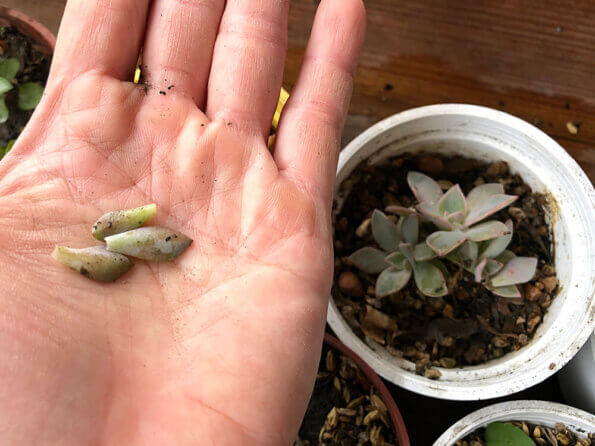
Step 2: Place the leaf in a dry area and wait for it to develop roots.
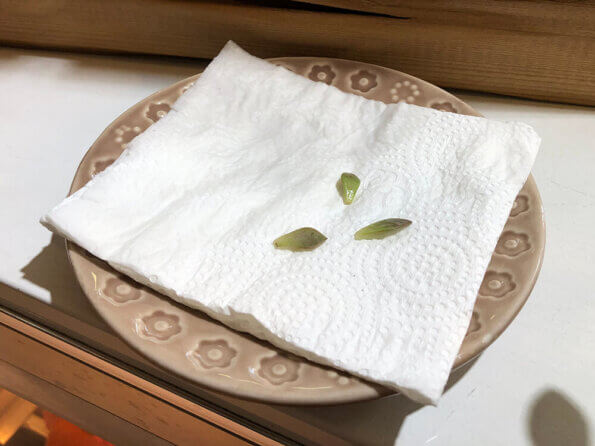
I placed the succulent leaves on a kitchen paper towel, in a cool and shaded indoor area without direct sunlight. You can also place them on dry soil or small rocks. Remember, no need to water! No need to water! No need to water! It’s essential, so I repeat it three times!
After a few days, wait for the cut edges to heal and roots to develop. Depending on the variety, some succulents can be planted directly into the soil after the cut edges have healed, like Graptopetalum paraguayense. However, for Echeveria cv. Huthspinke, this is not advisable as they may rot if exposed to moisture.
After about a month, the roots have grown long (as shown in the picture below), and a small succulent has also sprouted.
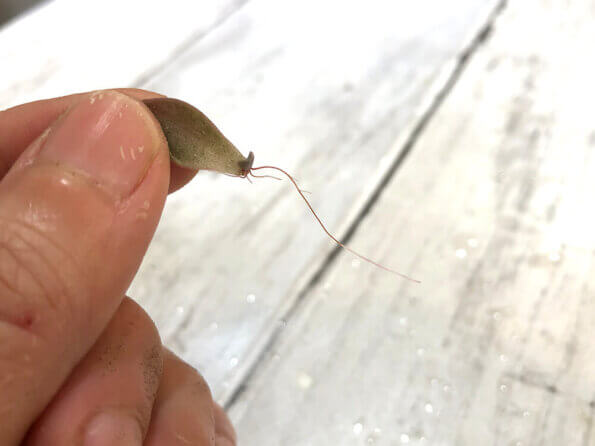
Step 3: Prepare well-draining potting soil.
Firstly, prepare a pot with plenty of drainage holes. It’s best to choose a pot like the one shown below, which has slanted drainage holes.
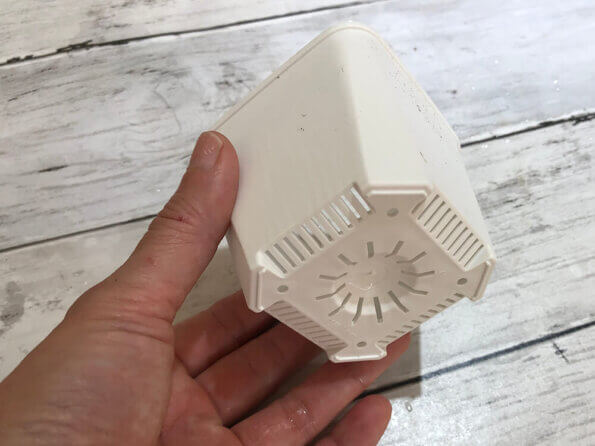
Next is the potting medium I designed for succulents:
a. Expanded clay pebbles
Purpose: Drainage
The size of the pellets is not important; what matters is that the bottom of the pot must have this type of medium to aid in drainage. Using a pile of stones is also acceptable.
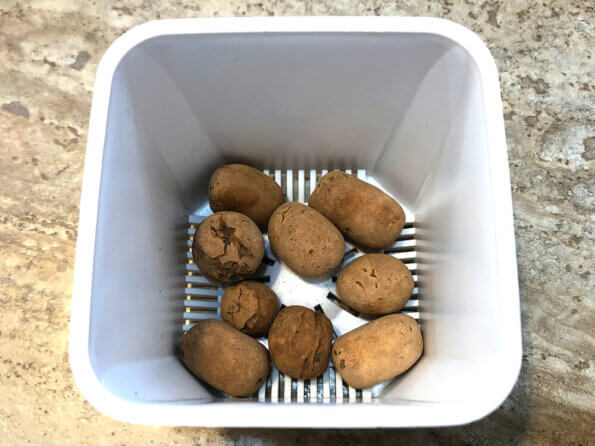
b. Lava pebbles (optional)
Purpose: Drainage and increasing soil aeration
The expanded clay pebbles I use are quite large, with plenty of gaps between them. To prevent soil from settling and filling these gaps, which could impede drainage, I fill the bottom of the pot with lava pebbles. Lava pebbles is less likely to disintegrate or decompose, ensuring long-term soil aeration. Additionally, it contains trace elements that can benefit plant growth. If the soil already contains plenty of small stones, lava pebbles may not be necessary.
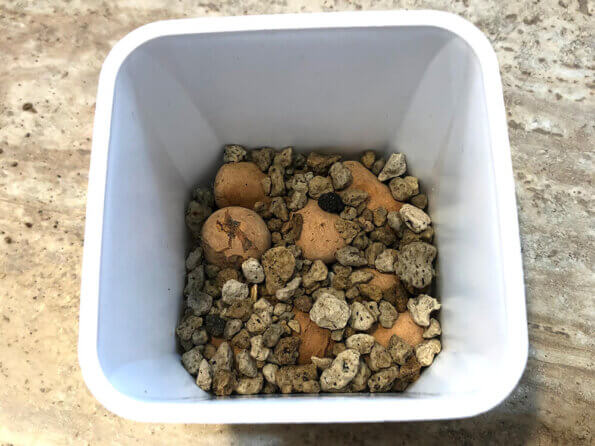
c. Burnt rice husk (optional)
Purpose: Promoting root strength
Burnt rice husk can provide potassium fertilizer to plants, which strengthens the root system. However, it’s not necessary to include them; allowing the plants to grow naturally is also a good option.
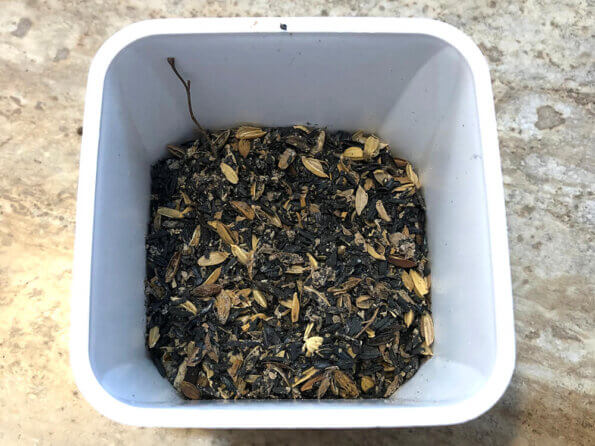
d. Rice husk (or coconut coir can also be used)
Purpose: Improving soil aeration
Because I am a rice farmer, there’s plenty of rice husk available to mix into the soil to enhance aeration. If rice husk isn’t available, coconut coir can be used as an alternative (though it’s typically more expensive than rice husk).
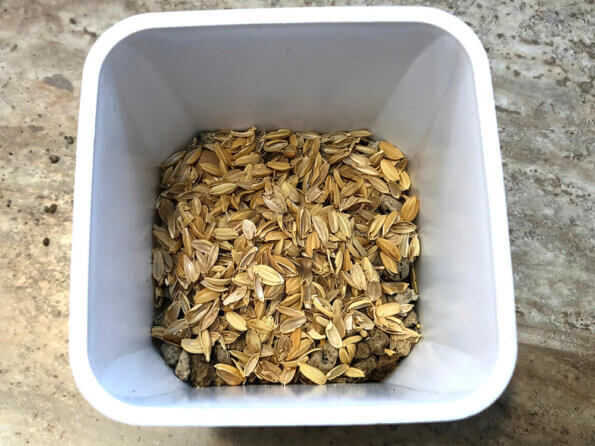
e. Soil mixed with small stones
Purpose: Succulents thrive in loose soil.
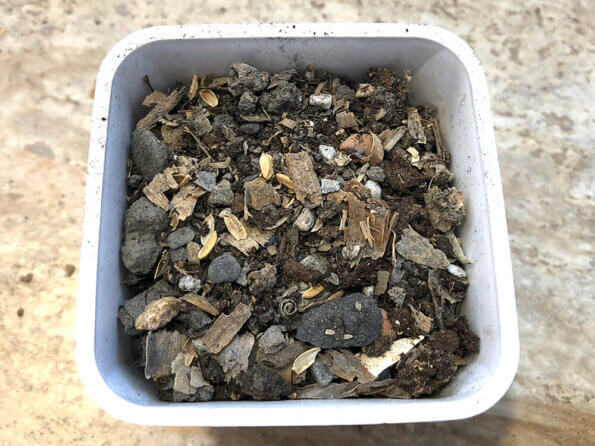
f. Maifanitum Stones (optional)
Purpose: Aesthetic
Maifanitum Stones has water-purifying properties and contains trace elements that can benefit plant growth, but primarily, I use maifanitum stones for its aesthetic appeal.
As shown in the image below, leave a portion without maifanitum stone for the succulent leaves that are being propagated.
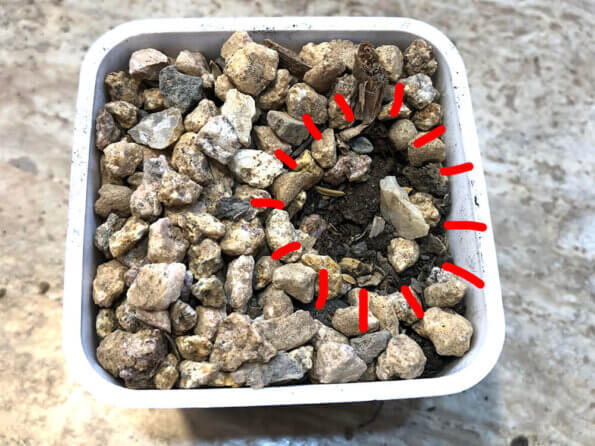
Water the plants and check if drainage occurs rapidly from the bottom. If water does not drain out or drains too slowly, the potting mix needs to be redesigned.
Step 4: Plant the rooted succulent leaves
Once the potting mix is prepared, place the rooted succulent leaves on top, with the roots facing towards the space reserved when laying the maifanitum stones.
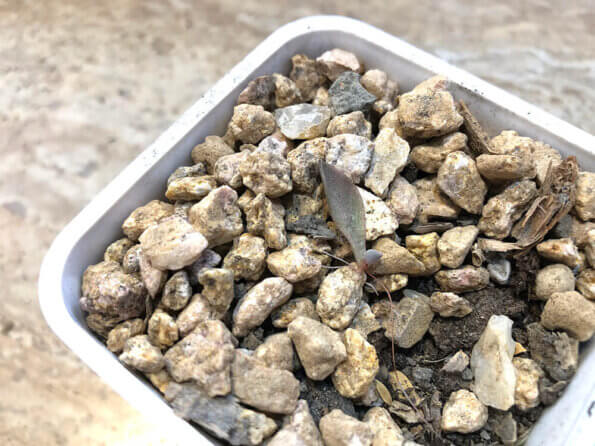
Cover the roots with soil.
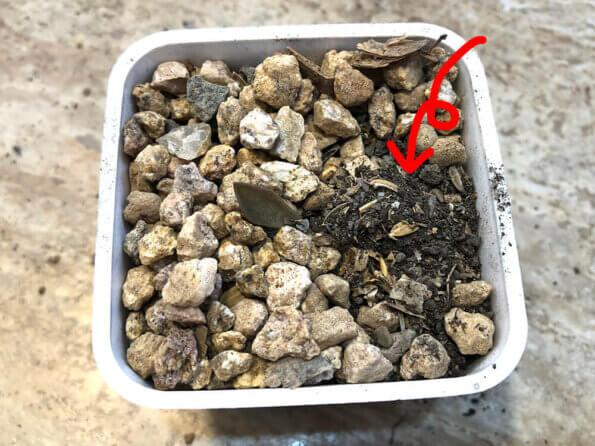
Add more maifanitum stones on top to ensure that the roots are pressed.
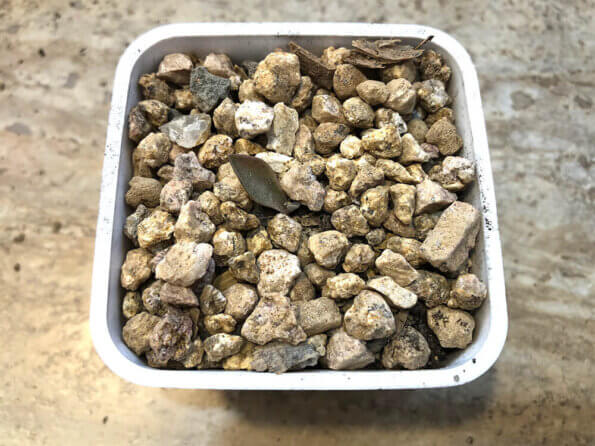
Once positioned outdoors, use a few pieces of maifanitum stones to weigh down the succulent leaves to prevent them from being blown away by the wind, then water them.
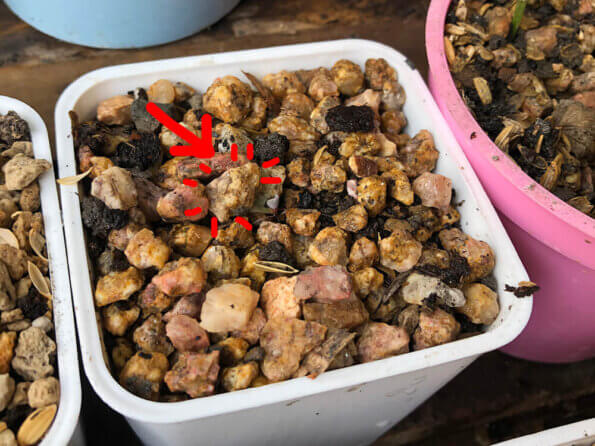
Succulents – Echeveria cv. Huthspinke – Care Instructions
These are desert plants! They don’t fear drought but they dread waterlogging! The key to take care of succulents is the soil drainage! As long as the soil drains quickly and absolutely does not retain water, you don’t need to worry too much about where they are planted.
- Sunlight: Partial or full sunlight is suitable! Partial sunlight may result in more elongated growth, meaning the stems will be longer.
- Drainage: Excellent drainage is essential! Sandy soil is preferred, and adding more large stones to the bottom of the pot can enhance drainage speed!
- Watering: Succulent leaves are thick, a feature of desert plants for storing water. If they are placed outdoors and get rained on, you may not need to water them unless there’s no rain for three weeks and it’s very sunny. You can observe the fullness and color of the leaves. If the leaf tips are slightly yellow or the leaves appear wrinkled and not plump, it’s usually a sign of severe dehydration, so water them promptly.
- Fertilization: They will continue to grow even without fertilization, especially if they get rained on – that’s natural nitrogen fertilizer! So, it’s okay not to fertilize! Alternatively, you can dilute leftover milk bottles or soy milk bottles (unsweetened) with water for watering, or you can use rice water.
- Pruning: If the seedlings grow too much, it’s recommended to repot them into larger pots. Otherwise, you can transplant the seedlings into different pots. Otherwise, overcrowding can lead to disease.
In the absence of fertilization, the succulent will grow to resemble the image below after about six months.
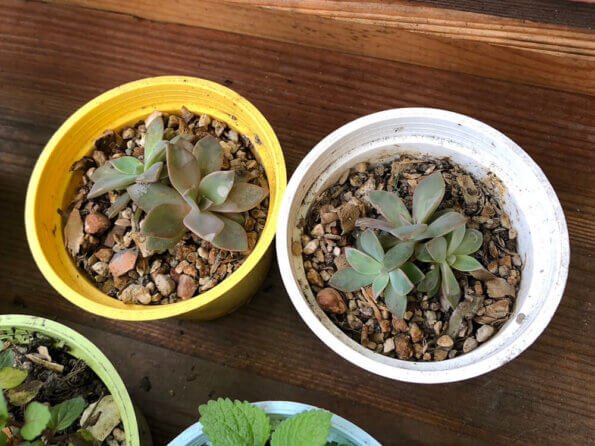
A single leaf can sprout two to three new succulent plants.
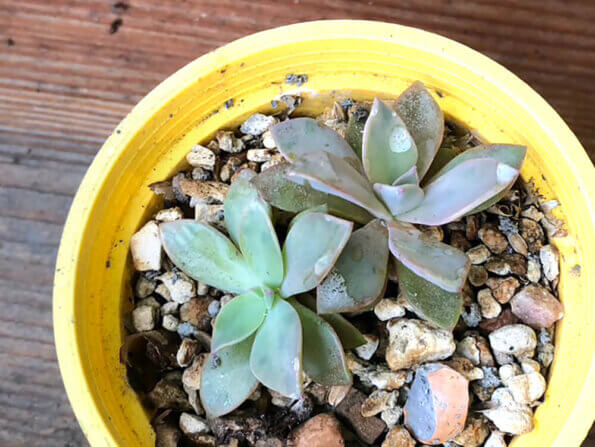
Can succulent plants be eaten?
Some succulent plants are edible. But what about “Echeveria cv. Huthspinke”? I don’t recommend it! Because it is a hybrid variety, it’s safer to buy cactus leaves available in supermarkets if you want to consume succulent plants. (At least I wouldn’t dare to eat “Echeveria cv. Huthspinke”!)
In addition to cactus, there are also succulent plants used for making alcohol: the Agave plant.
Alcohol distilled from Agave is commonly known as Mezcal, while the type made from Blue Agave, specifically in Mexico, is called Tequila.
Mimi first noticed the Agave plant over twenty years ago while traveling to Penghu, Taiwan, where there were many Agave plants. But they weren’t the type used for alcohol production.
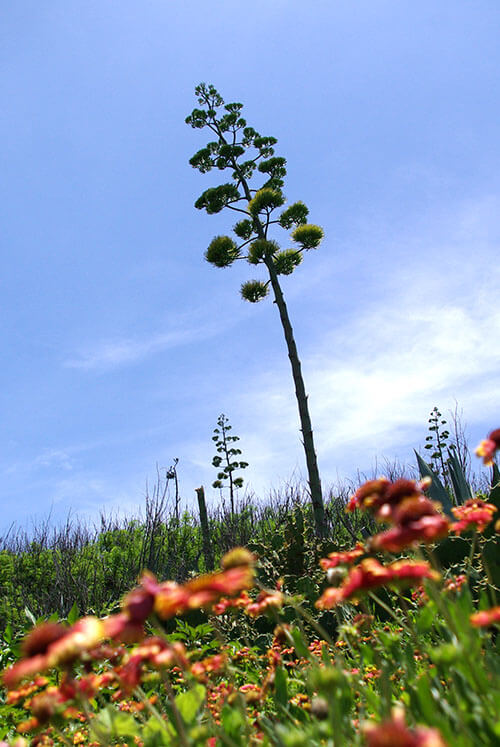
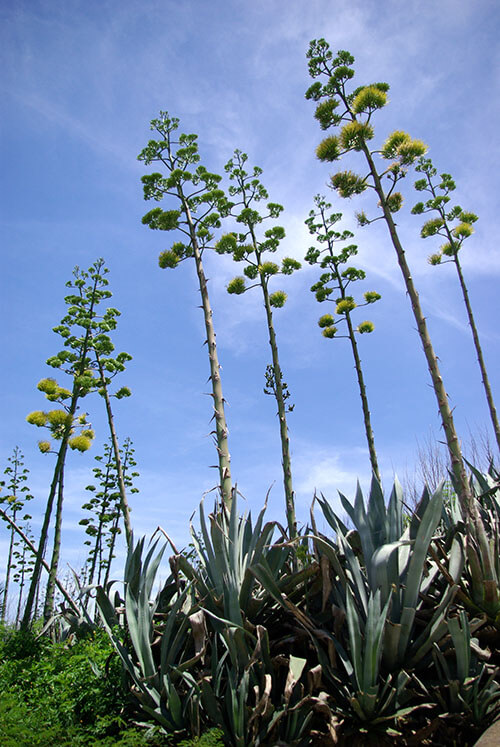
So many varieties of succulent plants.
Succulents seem to be particularly prone to hybridization, hence the endless array of species, right? In 2017, when I was pregnant, I once accompanied my husband to a gathering at the mountainside where he went to play paintball while I wandered around aimlessly. I stumbled upon a large succulent plant nursery and had a conversation with a young man who turned out to be the owner. At the time, the owner had his eyes set on the Chinese market, claiming that the succulent market was booming to an exaggerated extent, with new varieties popping up like mushrooms after rain. The naming of these varieties was also quite casual. However, because the Chinese market was vast, he continued to follow the trend. (I wonder if that young man has since exited the market?)
Succulent plants became popular again in the following years, and now the craze has cooled down quite a bit. Many beautiful varieties are now more affordable.
Succulent Bouquets
In 2015, when I was taking wedding photos, I became obsessed with succulent bouquets. Just to tie a bouquet, I went to the Taipei Neihu Flower Market and bought over ten different varieties of succulent plants. Some of them cost nearly two hundred NT for just one plant! My plan was to tie them into a bouquet for photos and then replant them in soil for continued care. It was a unique bouquet and didn’t waste money.

Here’s a glimpse of the succulent bouquet results! It was quite laborious to tie them together.

It took me a whole evening to tie together a bouquet at home, but to my surprise, the leaves fell off with just a gentle touch! Thankfully, I still had a day before the photoshoot, so I hurriedly inserted the fallen leaves back with wire—only to see more leaves falling off again.


After struggling, I realized the situation was not salvageable. Making a quick decision, I abandoned the idea of using succulents for the bouquet and rushed back to the flower market to opt for my second choice—dried flowers! Unfortunately, all those succulents, with their leaves poked through multiple times with wire, didn’t survive after being planted back in the soil. It turned out succulents were more delicate than I had imagined. Since then, I haven’t attempted succulent bouquets again, to avoid harming them.

